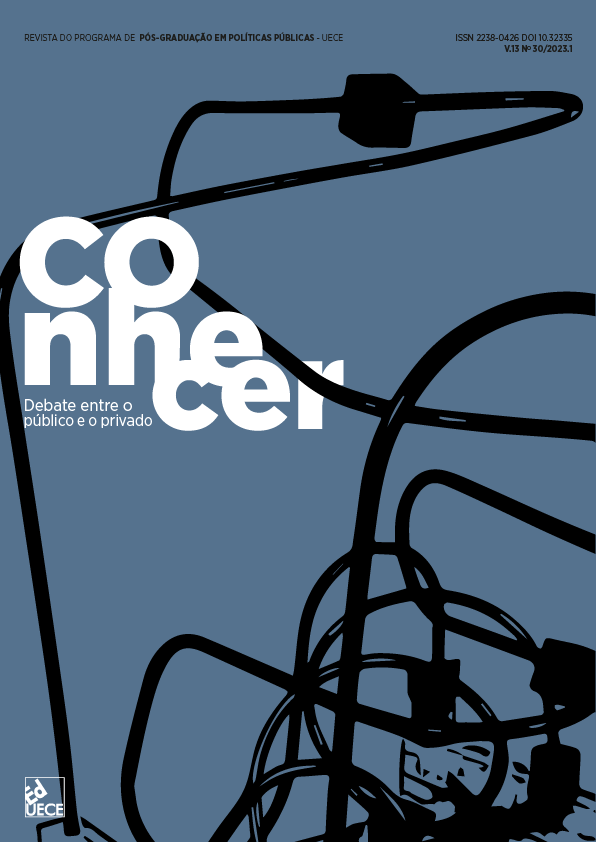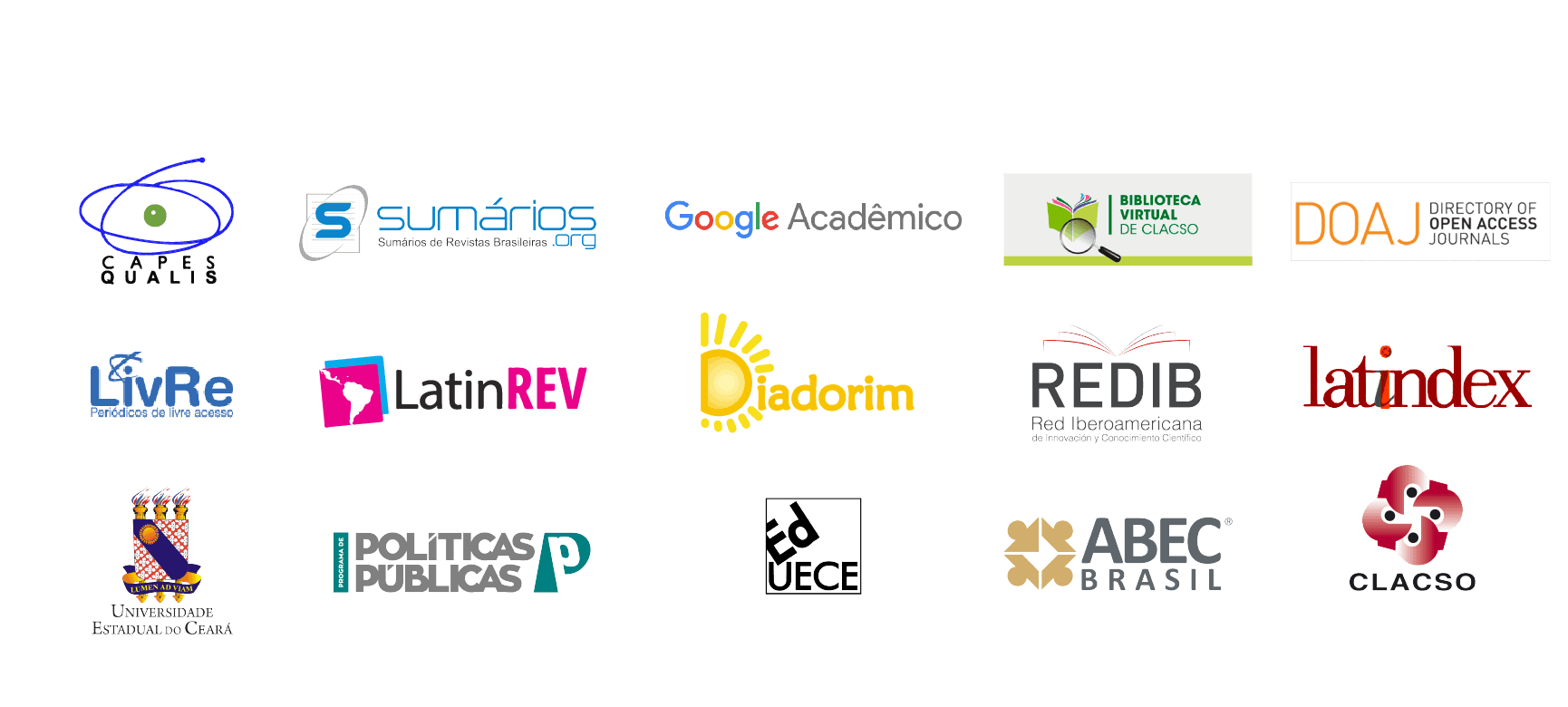Parlamento aberto: um estudo sobre a transparência na Assembleia Legislativa do Estado do Ceará.
DOI:
https://doi.org/10.32335/2238-0426.2023.13.30.9887Palabras clave:
portal de transparencia, actividad legislativa, transparencia en el Poder LegislativoResumen
A transparência é um princípio a ser respeitado por todos os poderes, porém a produção normativa, avaliativa e acadêmica tem dado maior destaque ao Poder Executivo, com foco na gestão fiscal e orçamentária. Essa realidade ofusca a relevância de observar como a transparência se dá no âmbito do poder que tem a função precípua de legislar e fiscalizar as ações do Executivo. É precisamente dessa lacuna que nasce a opção de pesquisar as especificidades do Poder Legislativo, a partir do caso da Assembleia Legislativa do Ceará (ALECE). O objetivo é analisar as práticas da ALECE para a disponibilização das informações sobre a sua atividade mais típica: a atividade legislativa. A pesquisa é de natureza qualitativa, para a coleta de dados foram utilizadas a pesquisa bibliográfica, documental e a observação de dois sítios eletrônicos: o sítio oficial da ALECE e o seu Portal da Transparência. Para a análise dos dados tomou-se como referência o Índice de Transparência dos Portais Legislativos (ITpL). Observou-se que a ALECE, apesar de possuir um quadro normativo que atende aos requisitos legais, apresenta baixa transparência em seu principal canal, o Portal da Transparência.
Descargas
Citas
Almada, M. P. (2013). Participação política e transparência online: um panorama sobre a democracia digital no Brasil a partir de iniciativas da sociedade civil (Dissertação de Mestrado). Universidade Federal da Bahia, Salvador, BA.
Campos, R., Paiva, D., & Gomes, S. (2013). Gestão da informação pública: um estudo sobre o Portal Transparência Goiás. Sociedade e Estado, 28(2), 421-446. Constituição Política do Estado do Ceará. (1989). Fortaleza, CE.
CUCCINIELLO, M.; PORUMBESCU, G.; GRIMMELIKHUIJSEN, S. “25 years of transparency research: evidence and future directions”. Public Administration Review, vol. 77, p. 32-44, 2016.
Gomes, W. (2028). Novos desafios para a ideia de transparência pública. Revista eCompos, E-ISSN 1808-2599
Índice de Transparência dos Portais Legislativos. (2020). Senado Federal.
Kniess, A. B., & Marques, F. P. J. (2021). Como o agente fiscalizador utiliza a comunicação online? A ideia de transparência pública nas redes sociais da Controladoria-Geral da União. Opinião Pública, 27(1), 90-126.
Lei n. 12.527, de 18 de novembro de 2011. (2011). Regula o acesso a informações previsto no inciso XXXIII do art. 5º, no inciso II do § 3º do art. 37 e no § 2º do art. 216 da Constituição Federal; altera a Lei n. 8.112, de 11 de dezembro de 1990; revoga a Lei n. 11.111, de 5 de maio de 2005, e dispositivos da Lei n. 8.159, de 8 de janeiro de 1991; e dá outras providências. Brasília, DF.
MEIRELLES, Hely Lopes. (2010) Direito Administrativo Brasileiro. 36. ed. São Paulo: Malheiros.
Minayo, M. C. S. (2002). Ciência, técnica e arte: o desafio da pesquisa social. In Pesquisa social: teoria, método e criatividade (21a ed., pp. x-y). Vozes.
Resolução Estadual n. 698, de 31 de outubro de 2019. (2019). Dispõe sobre a estrutura organizacional, cargos em comissão e funções de natureza comissionada da Assembleia Legislativa do Estado do Ceará e dá outras providências. Fortaleza, CE.
Resolução Estadual n. 732, de 15 de dezembro de 2021. (2021). Disciplina o acesso à informação no âmbito do poder legislativo do estado do Ceará. Fortaleza, CE
Schwarcz, L. M. (2019). Sobre o autoritarismo brasileiro. Companhia das Letras.
Silva, J. A. (2010). Curso de direito constitucional positivo (33a ed.). Malheiros.
Vasconcelos, T. (2022). Controladoria e transparência pública: o caso da Assembleia Legislativa do Ceará (Dissertação de Mestrado). Universidade Estadual do Ceará, Fortaleza, CE.
Descargas
Publicado
Cómo citar
Número
Sección
Licencia
Derechos de autor 2023 Conhecer: debate entre o público e o privado

Esta obra está bajo una licencia internacional Creative Commons Atribución 4.0.
Autores que publicam nesta revista concordam com os seguintes termos:
Autores mantém os direitos autorais e concedem à revista o direito de primeira publicação, com o trabalho simultaneamente licenciado sob a Licença Creative Commons Attribution que permite o compartilhamento do trabalho com reconhecimento da autoria e publicação inicial nesta revista.




